July 6, 2017 report
New superglue allows for bonding stretchable hydrogels
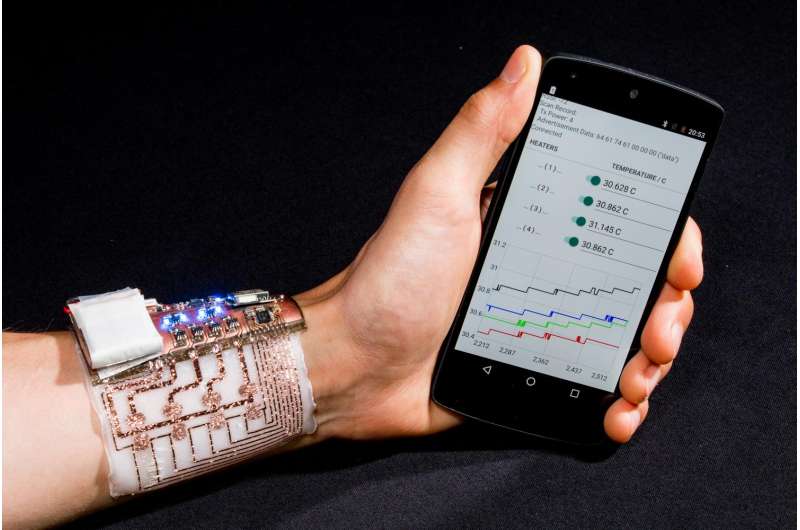
(Phys.org)—A team of researchers at Johannes Kepler University Linz has developed a new type of glue that can be used to bond hydrogels to other hard or soft objects. In their paper published on the open-access site Science Advances, the group explains their development process, the structure of the glue, how it works and in what ways.
Hydrogels, as the name suggests, are materials made mainly out of water. They are typically rubbery and are often elastic. Many of them have been developed to allow for the creation of materials that are more like those found in living creatures. Some examples include soft contact lenses, soft bone replacement in the vertebrae and even jelly-like robots. But one thing that has been holding back more advanced applications is the inability to glue or bond hydrogels with other objects in ways that allow for bending or stretching, or even for attaching well to hard objects. In this new effort, the researchers report they have developed a glue that solves this problem.
The researchers started by investigating the possibility of using superglue, the common household adhesive. But they found it would not work because when it dries, it becomes hard—that means that when two stretchy materials are bonded together, the glue cracks when both are stretched. That led them to conclude that what was needed was a non-solvent—a material that would not dissolve into the glue and would prevent it from becoming hard. The result, the team reports, is a glue made with cyanoacrylates (the adherents in superglue) diluted with a non-solvent. When it is applied to two surfaces, the researchers explain, it diffuses into their outer layers and is triggered to polymerize by the water content, such as in a hydrogel. Put another way, they say that the glue becomes tangled with the polymer chains in a gel, creating a very tight bond—and thus far, it has worked really well.
The team has tested their glue on a variety of products—gluing a hydrogel to a vertebrae model, for example. They found that it would also bond especially well with an elastomer. They used their glue to create a patch of electronic skin upon which they were able to glue such things as a processor, battery and temperature sensor.
-
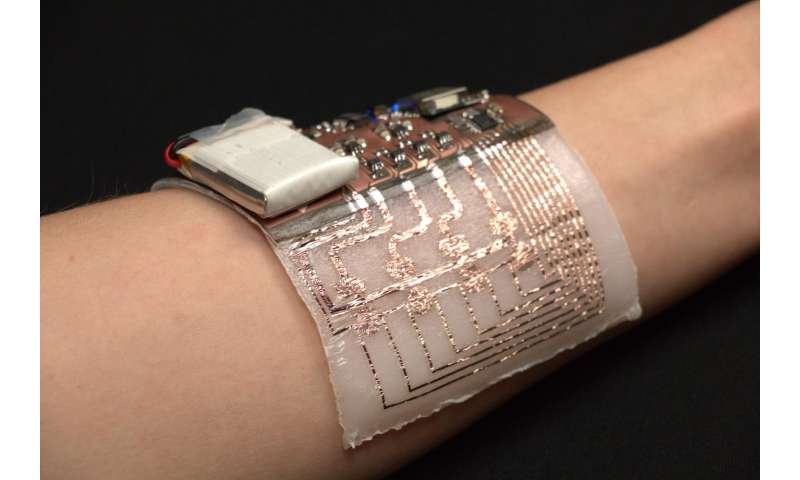
The hydrogel electronic skin. Hydrogels can transport liquids to and from the skin, for example supplying water-soluble medication or removing sweat. Credit: Soft Electronics Laboratory, Linz Institute of Technology -
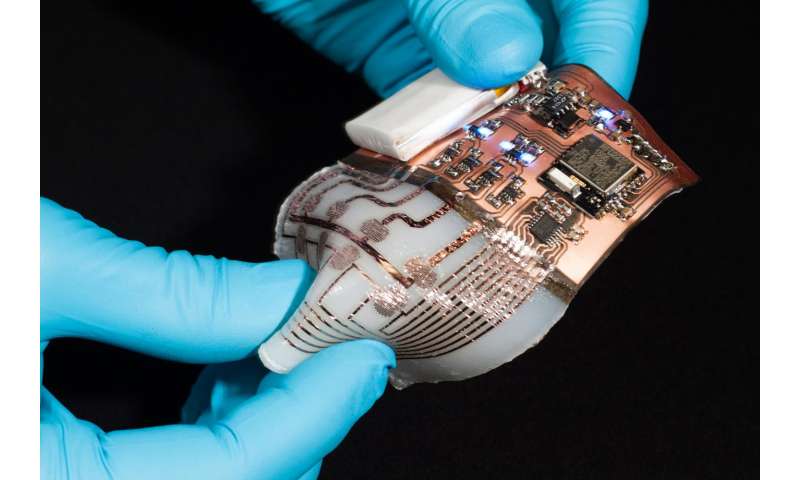
Demonstration of flexing, curling, stretching and compressing of the hydrogel with sensors and actuators. Credit: Soft Electronics Laboratory, Linz Institute of Technology -
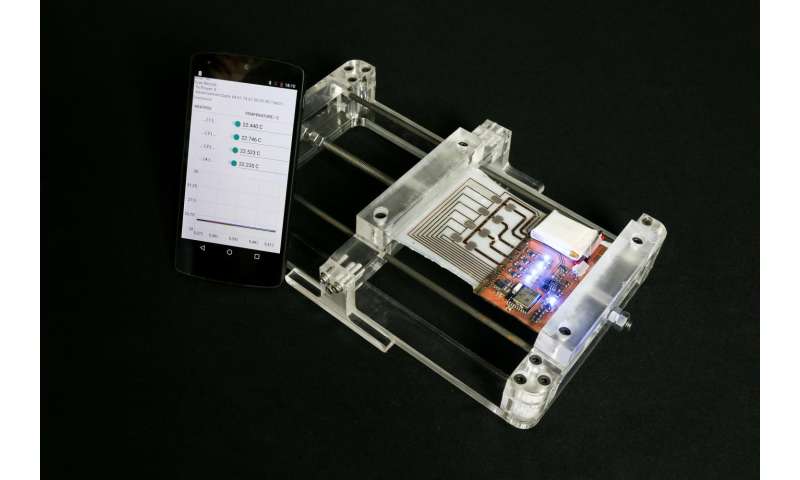
The hydrogel e-skin is controlled and data is read out continuously via a mobile phone, here mounted on a custom-made stretching unit with all heaters activated. Credit: Soft Electronics Laboratory, Linz Institute of Technology -
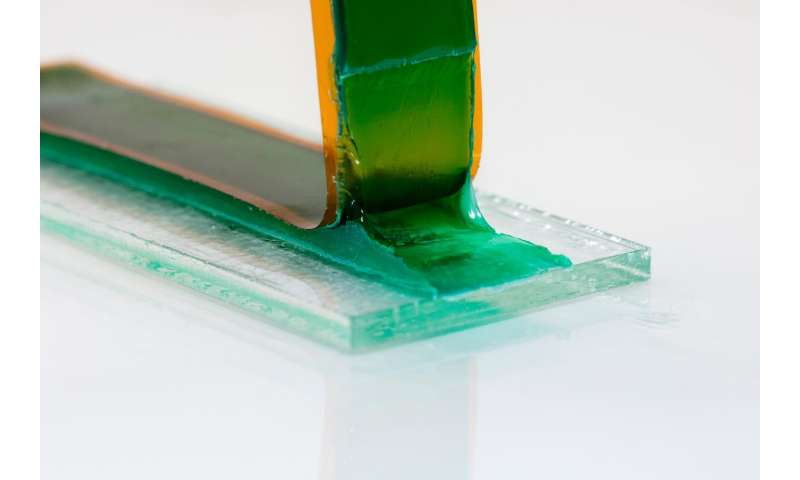
The pictures show a peeling test, with a hydrogel (green) instantly tough bonded to a PMMA (Polymethylmethacrylat) substrate. A liner serves as stiff backing. Cracking in the hydrogel occurs perpendicular to the peeling direction. Credit: Soft Electronics Laboratory, Linz Institute of Technology
More information: Daniela Wirthl et al. Instant tough bonding of hydrogels for soft machines and electronics, Science Advances (2017). DOI: 10.1126/sciadv.1700053
Abstract
Introducing methods for instant tough bonding between hydrogels and antagonistic materials—from soft to hard—allows us to demonstrate elastic yet tough biomimetic devices and machines with a high level of complexity. Tough hydrogels strongly attach, within seconds, to plastics, elastomers, leather, bone, and metals, reaching unprecedented interfacial toughness exceeding 2000 J/m2. Healing of severed ionic hydrogel conductors becomes feasible and restores function instantly. Soft, transparent multilayered hybrids of elastomers and ionic hydrogels endure biaxial strain with more than 2000% increase in area, facilitating soft transducers, generators, and adaptive lenses. We demonstrate soft electronic devices, from stretchable batteries, self-powered compliant circuits, and autonomous electronic skin for triggered drug delivery. Our approach is applicable in rapid prototyping and in delicate environments inaccessible for extended curing and cross-linking.
Journal information: Science Advances
© 2017 Phys.org




















